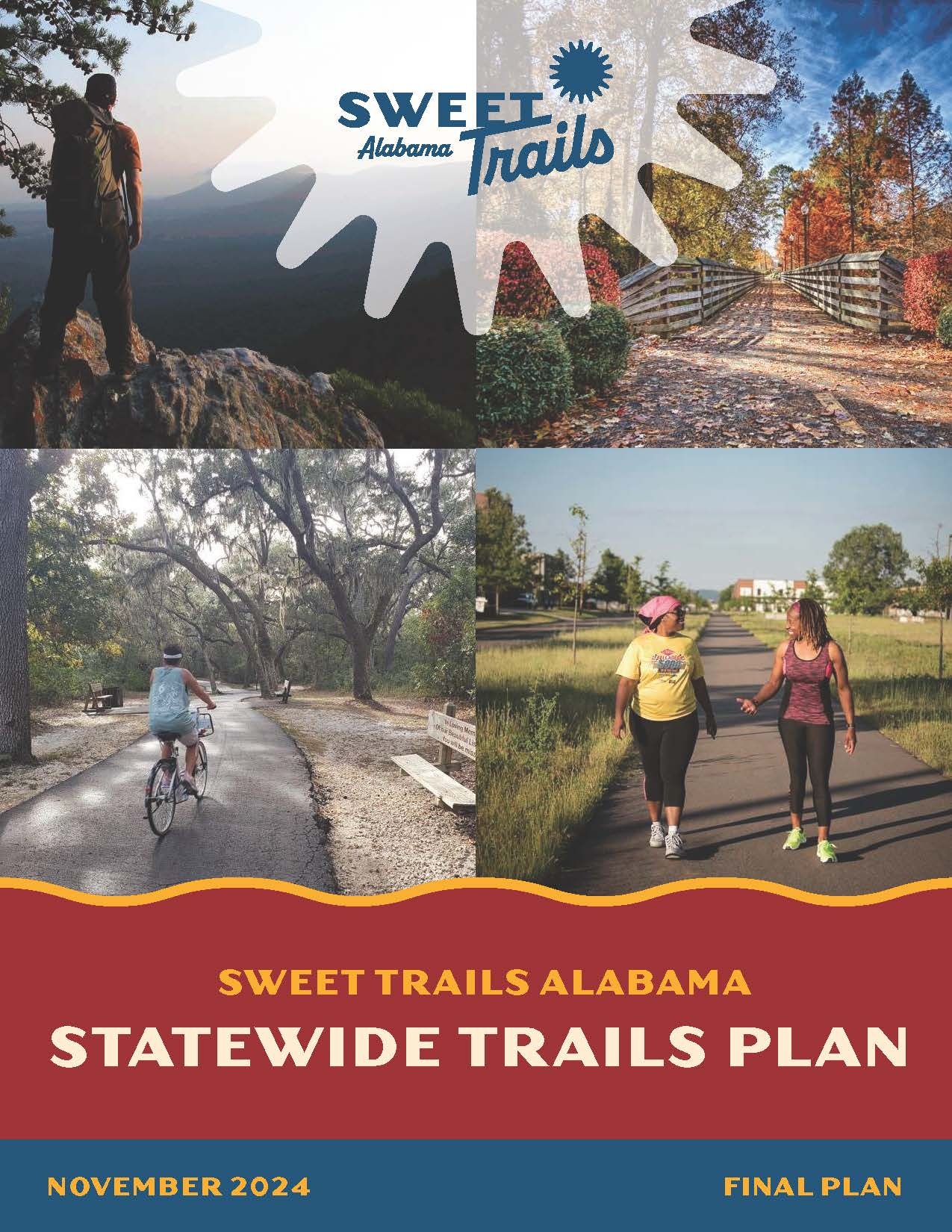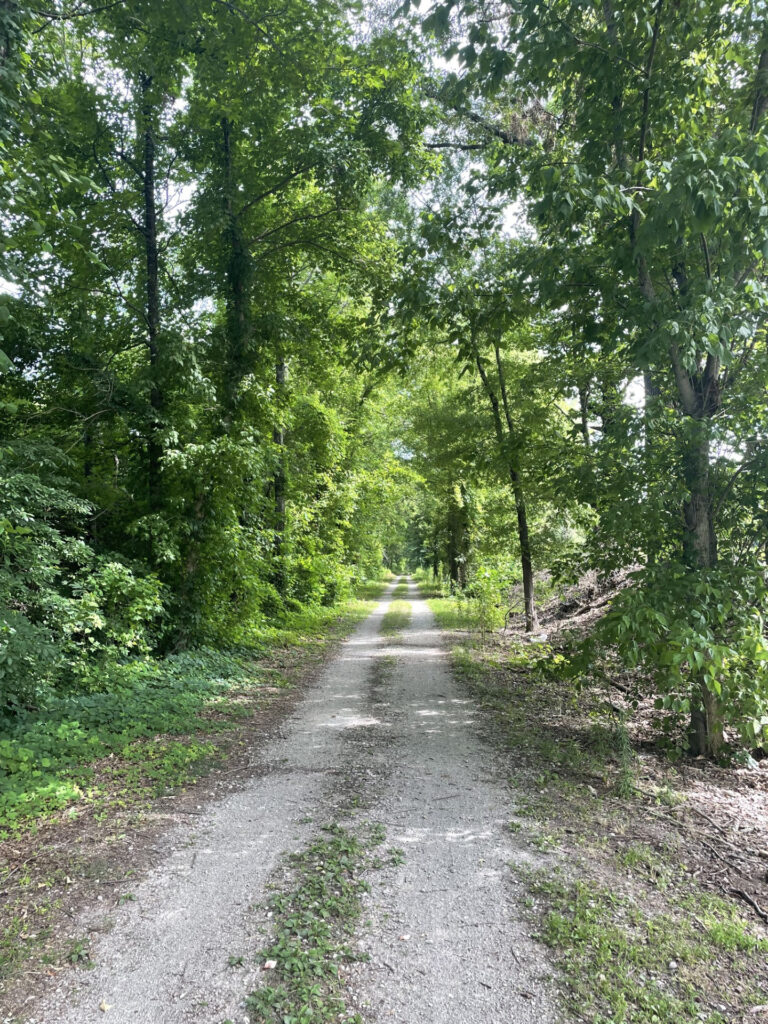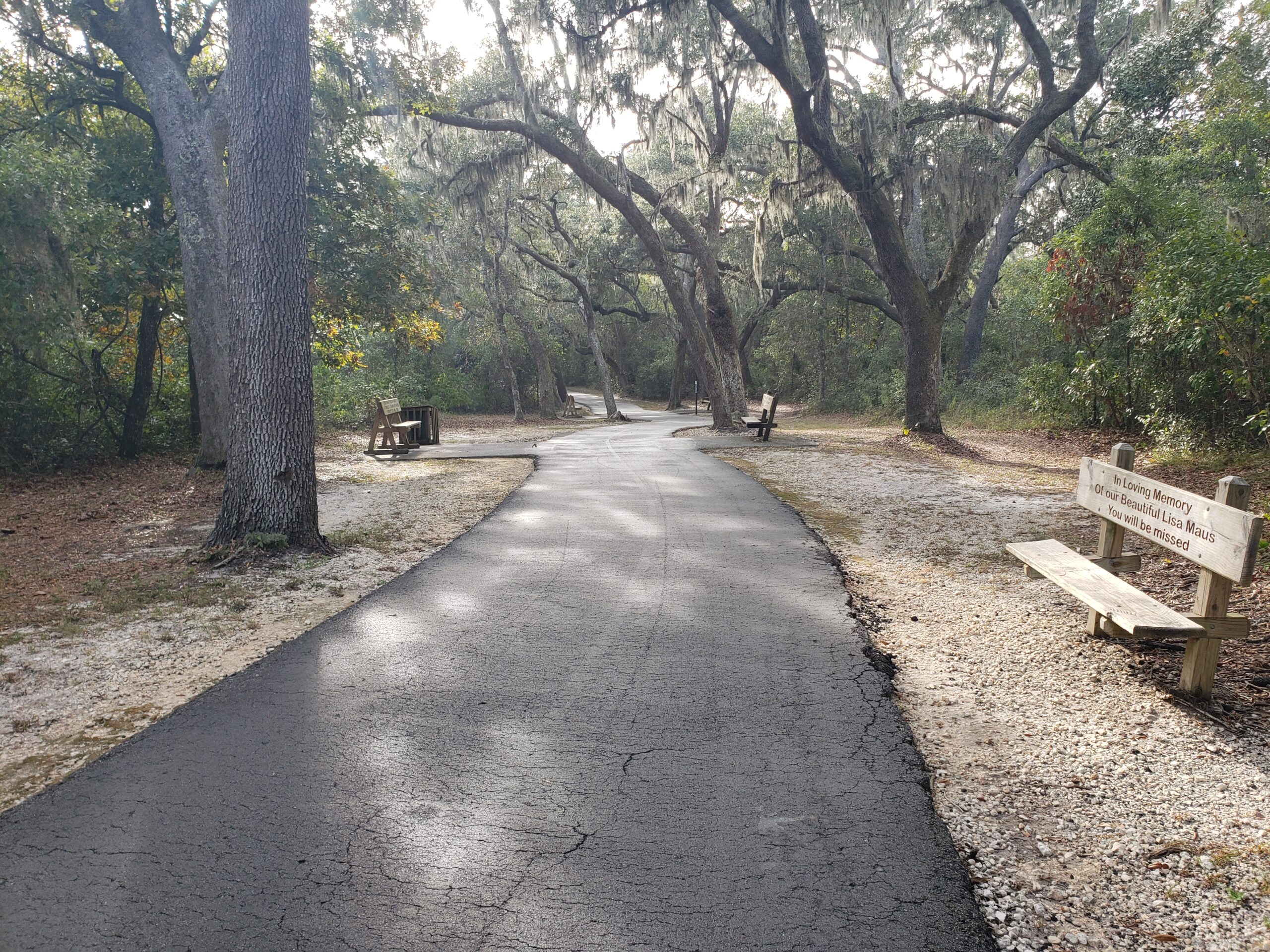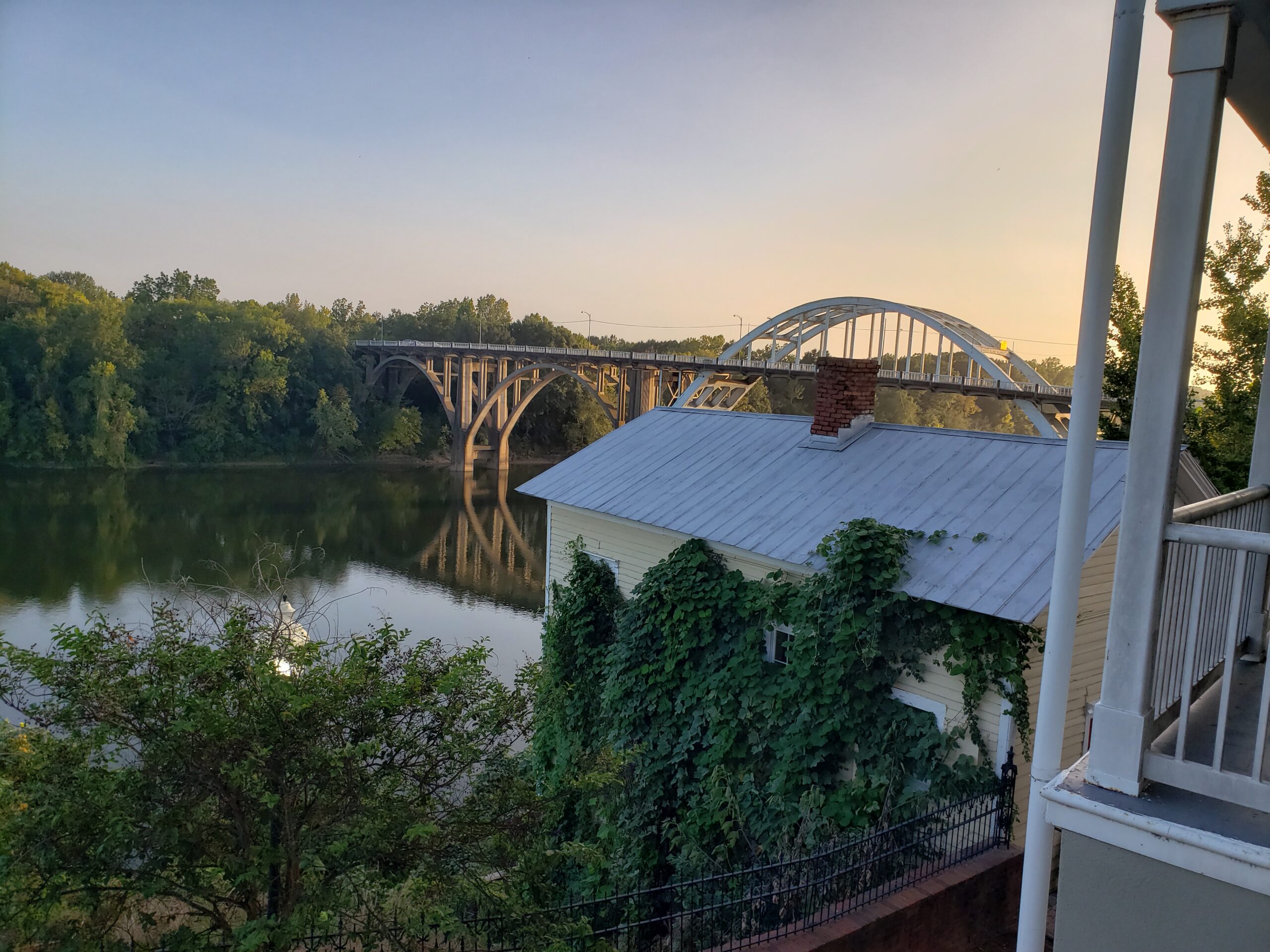
The Plan Is Complete!
Sweet Trails Alabama, the Alabama Statewide Comprehensive Trails Plan, is the statewide initiative and planning document that identifies and maps existing trails and presents a statewide network composed of regional and local trails to connect all 67 counties, their communities, and major cultural and natural resource destinations across the state.
The Plan serves as a blueprint for the State’s future investment in a connected, accessible, safe, and world-class trail network.
Timeline
State Planning
- Establish Trails Coalition
- Collaborate with Innovate Alabama
- Coordinate with state initiatives
- Promote Year of the Trail
Regional, County, and Local Planning
- Update trails plans
- Host local public input meetings
- Coordinate with Regional Councils
Corridor Feasibility
- 3-8 corridor feasibility studies
- Continued public engagement
Design and Construction
- Identify projects for funding
- Fundraise and plan for match
- Submit grant applications
2025
2026-2027
2028-2029
2030+

The Richard Martin Trail
North Alabama
Trail of the Month
The Richard Martin Trail travels nearly 11 miles from northern Athens in Limestone County to near the Tennessee border in Veto. The trail follows a former rail bed through rural, bucolic northern Alabama countryside. It is composed of crushed stone and gravel and accommodates equestrian, hiking, and biking/mountain biking use. About halfway along the trail, the trail connects to Elkmont’s historic depot where shops, a trailhead, and restrooms are available.
The trail is named for local advocate Richard Martin who has spent tireless amount of energy and time to get the trail developed. Richard continues to support efforts to extend the trail further north into Tennessee and south to connect to Athens, the Swan Creek Greenway, and the Singing River Trail.
Until 1986, the Tennessee & Alabama Central Railroad brought mail and supplies to area communities and carried away cotton. The Veto trailhead includes the restoration of a 19th-century community church and restroom facilities. The trail passes the site of Civil War battles. Today, the trail is enjoyed by naturalists, birdwatchers, historians, students, joggers, bikers, horseback riders, and outdoor enthusiasts of all types.
FAQs
Sweet Trails Alabama is in the early stages of implementation and will have multiple simultaneous projects moving into 2025 (see below). Stay tuned for more details on coming events and engagement opportunities!
2025 marks Year 1 of Implementation for Sweet Trails Alabama! The following projects will be running simultaneously throughout the year:
- Year of the Trail with Alabama Tourism
- Community Trail Toolkit
- Creation of the Sweet Trails Alabama Coalition
Feasibility Studies:
- Low Traffic Roads as Trails
- Birmingham to Anniston Trail
- Greensboro to Mario to Selma Trail
- Andalusia Rail Trail
- Singing River Trail to Chief Ladiga Trail
- Around the Mobile Bay Trail



